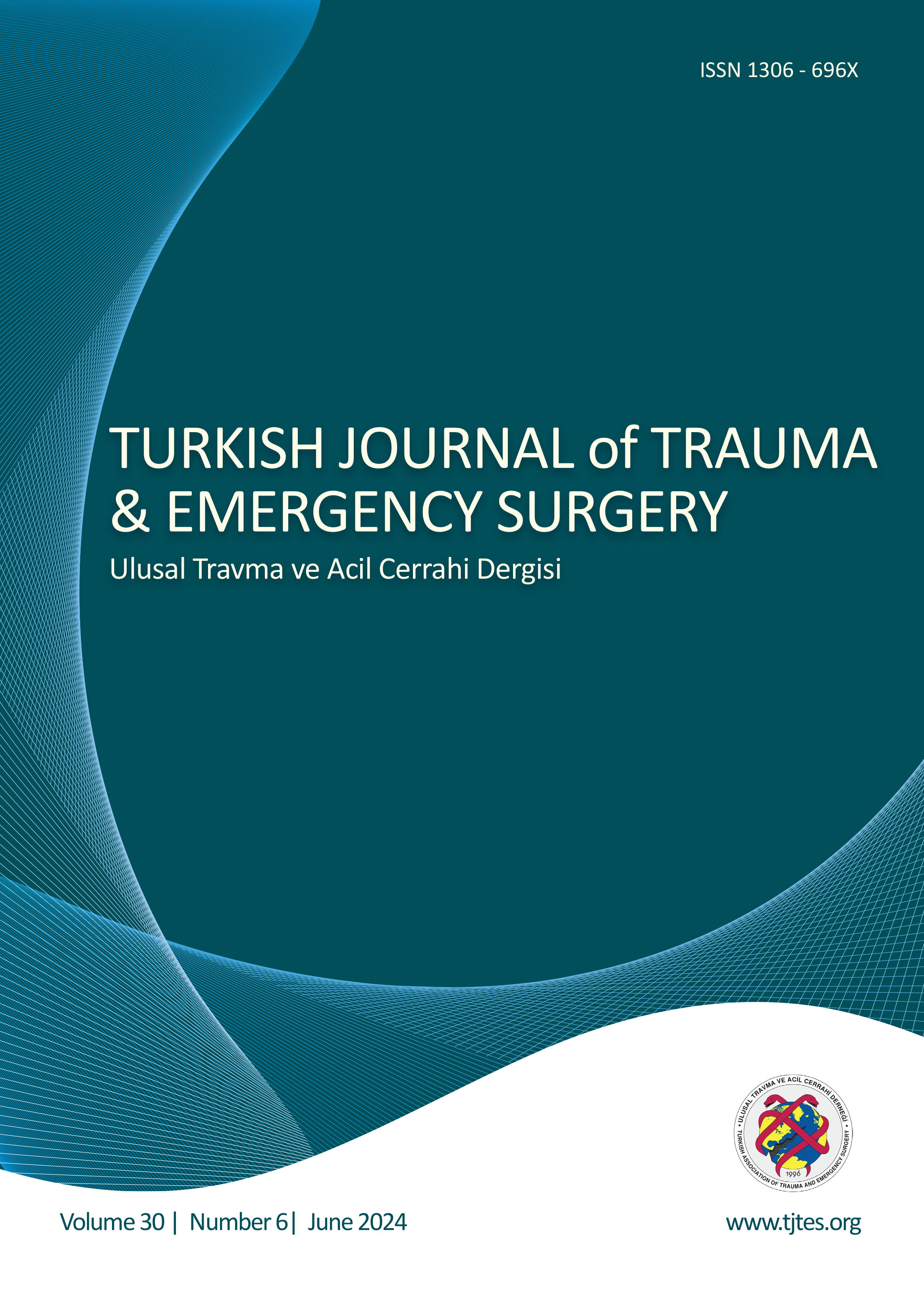Quick Search
Dextrose neuroprolotherapy and occlusal splint treatment outcomes in occlusal trauma: Evaluation through ultrasound imaging
Hilal Peker Öztürk1, Aydan Örsçelik2, Hatice Seda Ozgedik1, Gökhan Büyüklüoğlu2, Ilker Solmaz3, Şahin Kaymak4, Kaan Orhan51Department of Oral and Dentomaxillofacial Radiology, University of Health Sciences Gülhane Faculty of Dentistry, Ankara-Türkiye2Department of Sports Medicine, University of Health Sciences Gülhane Faculty of Medicine, Ankara-Türkiye
3Traditional and Complementary Medicine Practice Center, Gulhane Education And Research Hospital, University of Health Sciences, Ankara-Türkiye
4Department of General Surgery, University of Health Sciences Gülhane Faculty of Medicine, Ankara-Türkiye
5Department of Oral and Dentomaxillofacial Radiology, Ankara University, Faculty of Dentistry, Ankara-Türkiye
BACKGROUND: Occlusal trauma has become a common phenomenon among individuals today. Its primary source is bruxism, which involves unusual activities such as clenching and grinding during the day or sleep. The hypothesis is that with 5% dextrose neuroprolotherapy, both the trigger points and affected nerves will be healed, and the muscle will be relieved by eliminating the pain.
METHODS: This study aimed to compare the short-term ultrasonographic results of patients treated with occlusal splint and 5% dextrose neuroprolotherapy for bruxism. Patients were divided into two groups: the dextrose neuroprolotherapy group and the occlusal splint group. In the first group, patients were administered 5% dextrose three times at one-week intervals using the dextrose neuroprolotherapy method. Impressions for both jaws were made using a high-viscosity irreversible hydrocolloid impression material in the second group. An occlusal splint was tailored to fit the upper jaw. Patients were assessed for masseter muscle thickness and strain ratio using ultrasonography before and 3 months after the treatment.
RESULTS: No statistically significant differences were found between the two groups for all measures. Statistically significant differences were observed in the strain ratio of the left musculus massetericus in the resting position and the thickness of the left musculus massetericus in the contracted position exclusively in the neuroprolotherapy group (p=0.001, p=0.011, respectively). Differences in the strain ratio of both sides of the contracted musculus massetericus were demonstrated in both groups (neuroprolotherapy group: right side p<0.001, left side p=0.007, splint group: right side p=0.005, left side p=0.012).
CONCLUSION: This study demonstrates that 5% dextrose neuroprolotherapy is an effective treatment comparable to an occlusal splint. Objectively visualizing changes in the masseter muscle through ultrasound provides clear results in the context of occlusal trauma and bruxism.
Oklüzal travmada dekstroz nöroproloterapisi ve oklüzal splint tedavisi sonuçları: Ultrason görüntüleme yoluyla değerlendirme
Hilal Peker Öztürk1, Aydan Örsçelik2, Hatice Seda Ozgedik1, Gökhan Büyüklüoğlu2, Ilker Solmaz3, Şahin Kaymak4, Kaan Orhan51Sağlık Bilimleri Üniversitesi, Gülhane Diş Hekimliği Fakültesi, Ağız Diş ve Çene Radyolojisi Anabilim Dalı, Ankara, Türkiye2Sağlık Bilimleri Üniversitesi, Gülhane Tıp Fakültesi, Spor Hekimliği Anabilim Dalı, Ankara, Türkiye
3Sağlık Bilimleri Üniversitesi, Gülhane Eğitim ve Araştırma Hastanesi, Geleneksel ve Tamamlayıcı Tıp Uygulamaları Merkezi, Ankara, Türkiye
4Sağlık Bilimleri Üniversitesi, Gülhane Tıp Fakültesi, Genel Cerrahi Anabilim Dalı, Ankara, Türkiye
5Ankara Üniversitesi, Diş Hekimliği Fakültesi, Ağız Diş ve Çene Radyolojisi Anabilim Dalı, Ankara, Türkiye
AMAÇ: Günümüzde bireylerde okluzal travma çok sık rastlanılan bir olgu haline gelmiştir. Temel olarak kaynağı bruksizmdir. Bruksizm, gündüz veya uyku sırasında diş sıkma ve gıcırdatma gibi alışılmadık aktiviteleri içerir. Hipotez, %5 dekstroz nöroproloterapi ile tetik noktaları ve etkilenen sinirlerin iyileşeceği ve ağrının ortadan kaldırılmasıyla kasın rahatlayacağı yönündedir.
GEREÇ VE YÖNTEM: Bu çalışma, bruksizm tedavisinde okluzal splint ve %5 dekstroz nöroproloterapi kullanımının kısa vadeli etkilerini Ultrasonografi ile karşılaştırmayı amaçlamıştır. Hastalar rastgele iki gruba ayrıldı; dekstroz nöroproloterapi ve okluzal splint. dekstroz nöroproloterapi yöntemi ile %5 dekstroz bir hafta arayla 3 kez uygulandı. İkinci grupta her iki çene için yüksek viskoziteli geri dönüşümsüz hidrokolloid ölçü maddesi kullanılarak ölçüler alındı. Üst çeneye uyacak şekilde özelleştirilmiş bir okluzal splint yapıldı. Hastalar, tedavi öncesi ve tedaviden 3 ay sonra ultrasonografi kullanılarak masseter kasının kalınlık ve elastografi(strain oranı) açısından değerlendirildi.
BULGULAR: Tüm ölçümler için iki grup arasında istatistiksel olarak anlamlı bir fark bulunmamıştır. Nöroproloterapi grubunda yalnızca sol masseter kasının dinlenme pozisyonundaki strain oranı ve kasılı pozisyondaki kalınlığında istatistiksel olarak anlamlı fark gözlenmiştir (sırasıyla p=0.001, p=0.011). Her iki grupta da kasılı haldeki masseter kasının her iki tarafındaki strain oranında anlamlı fark gösterilmiştir (nöroproloterapi grubu; sağ taraf p<0.001, sol p=0.007, splint grubu; sağ taraf p=0.005, sol p=0.012).
SONUÇ: Bu çalışma, %5 dekstroz nöroproloterapinin okluzal splint ile benzer şekilde etkili bir tedavi olduğunu göstermektedir. Ultrasonografi kullanılarak masseter kasındaki değişikliklerin objektif olarak görselleştirilmesi, okluzal travma ve bruksizm bağlamında net sonuçlar ortaya koymaktadır.
Manuscript Language: English




